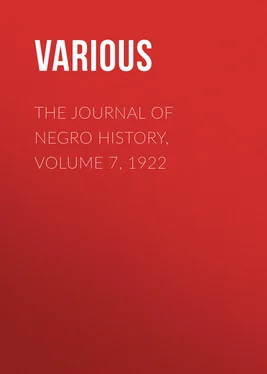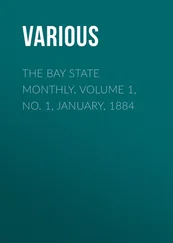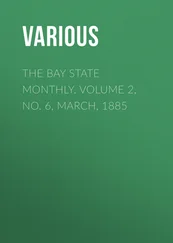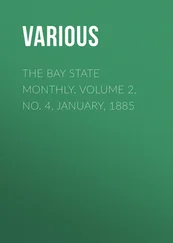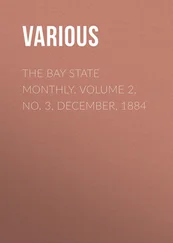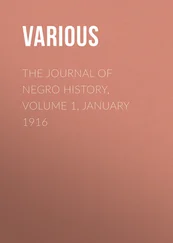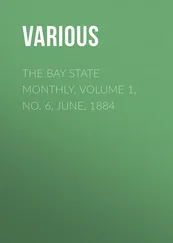Various - The Journal of Negro History, Volume 7, 1922
Здесь есть возможность читать онлайн «Various - The Journal of Negro History, Volume 7, 1922» — ознакомительный отрывок электронной книги совершенно бесплатно, а после прочтения отрывка купить полную версию. В некоторых случаях можно слушать аудио, скачать через торрент в формате fb2 и присутствует краткое содержание. Жанр: foreign_antique, periodic, История, foreign_edu, на английском языке. Описание произведения, (предисловие) а так же отзывы посетителей доступны на портале библиотеки ЛибКат.
- Название:The Journal of Negro History, Volume 7, 1922
- Автор:
- Жанр:
- Год:неизвестен
- ISBN:нет данных
- Рейтинг книги:3 / 5. Голосов: 1
-
Избранное:Добавить в избранное
- Отзывы:
-
Ваша оценка:
- 60
- 1
- 2
- 3
- 4
- 5
The Journal of Negro History, Volume 7, 1922: краткое содержание, описание и аннотация
Предлагаем к чтению аннотацию, описание, краткое содержание или предисловие (зависит от того, что написал сам автор книги «The Journal of Negro History, Volume 7, 1922»). Если вы не нашли необходимую информацию о книге — напишите в комментариях, мы постараемся отыскать её.
The Journal of Negro History, Volume 7, 1922 — читать онлайн ознакомительный отрывок
Ниже представлен текст книги, разбитый по страницам. Система сохранения места последней прочитанной страницы, позволяет с удобством читать онлайн бесплатно книгу «The Journal of Negro History, Volume 7, 1922», без необходимости каждый раз заново искать на чём Вы остановились. Поставьте закладку, и сможете в любой момент перейти на страницу, на которой закончили чтение.
Интервал:
Закладка:
Many of the early teachers of Storer College spent a part of their time working among Negroes in nearby communities. Mrs. Annie Dudley, a white woman connected with that institution, taught the first school at Shepherdstown. She had about twenty-five students and conducted a night and a day school. She was a well-educated, sympathetic woman who did much to lay the foundation for the Negro public school which was established there in 1872. The next popular teacher in the Eastern Panhandle was William B. Evans, who successfully taught in Shepherdstown, Keyser, Martinsburg, and Bolivar for forty-two years. His wife, Mrs. M. E. L. Evans, after beginning in Virginia, taught ten years at Storer, Summit Point, Smithfield, and Bolivar. William Arter taught thirty-two years at Kabletown, doing excellent work. The most prominent teacher that Shepherdstown had was John H. Hill. He graded the work of the school and endeavored to standardize instruction. He is still remembered in that community for the efficient work which he did. He was finally succeeded by Alexander Freeman when Mr. Hill became an instructor in the West Virginia Colored Institute, of which he later became principal.
About the same time the influence of Storer College was felt in Charles Town, the county seat of Jefferson County, where there was another settlement of Negroes. The first teacher of whom we have a record was one Enos Wilson, a Negro. He was a man of fair preparation through self-instruction. He had much enthusiasm in his work, exerted an influence for good, and won the respect of his people. In achieving his success he had the cooperation of Mr. William Hill, the grandfather of J. H. Hill. Although not well informed himself, William Hill believed in education and religion, and supported all uplift movements then taking shape among the Negroes.
Following Enos Wilson, who later became an instructor in another field, came L. L. Page, who building upon the foundation made by his predecessors rendered unusually valuable service. Like his predecessor he was a very good man and an enthusiastic worker. The people waited upon his words, answered his summons to social service, and supported him in his efforts to promote their general welfare. This is evidenced by the fact that he served his community acceptably about twenty-five years. He was succeeded by Phillip Jackson, who found the school sufficiently well developed to necessitate the employment of three teachers.
Not far away from this point Mrs. Emma Hart Brady opened a large school at Kearneysville, in Jefferson County, in 1869. She was a popular teacher for that day, used modern methods, and successfully instructed 80 or 90 students there for two terms. This school today, as it was then, is overcrowded and in need of better facilities. 38
Speaking generally, however, one must say that the education of the Negro in the Eastern Panhandle of West Virginia today is, after all, much more backward than in other parts. A good example of noble effort in behalf of the Negro was given, and the spirit with which workers should address themselves to the task was furnished by the founders and graduates of Storer College, but they were not supported by public sentiment among the whites of that section. Glancing at the map of West Virginia, one can readily see that the Eastern Panhandle is geographically a part of Maryland and Virginia, states which have not as yet been converted to the wisdom of making appropriations to Negro education equally as large as those providing for the education of the whites. The ardor of the successors of these early enthusiastic workers in that section, therefore, was dampened, and the results which they obtained fell far short of the aspiration of these pioneers to remake these freedmen that they might live as the citizens of a free republic.
A mere glance at the Negro schools in the northern section will show that these beginnings were confined to the Baltimore and Ohio railroad and its branches. There were not many Negroes living in the other northern counties of the State. In 1878, Moundsville in Marshall County welcomed a Negro woman, of Smithfield, Ohio, who taught its Negro public school. She had a fair preparation and rendered valuable service with the cooperation of such patrons as Mrs. Rollen, William Love, and Thomas McCoy. Because of the small Negro population in this town, however, this school has not rapidly developed, although the work of the teachers employed there has been efficient, as has been evidenced by their well-prepared eighth-grade students who have done excellently in more advanced schools. 39
A little farther north, in Wheeling in Ohio County, Negro education had a better opportunity. Wheeling is geographically a part of Pennsylvania, and its attitude toward education has been determined to a large extent by the impetus given the cause in that progressive commonwealth. The spirit of fairness in dealing with the man far down in urban communities nearby, moreover, has been reflected to a certain extent in the policies of the educational authorities of Wheeling in dealing with the Negro. At an early date the Negroes of Wheeling were provided with elementary schools. Referring to the increasing interest in Negro education in 1866, State Superintendent White said: "An excellent school has been started in Wheeling and a few are reported in other places. The school-house in Wheeling cost about $2500. The school is conducted by a teacher of their own color and the behavior and scholarship of the pupils are worthy of imitation."
Here, as in the case of most Negro schools near the Ohio River and even in the central portion of the State, their first teachers came from Ohio, where they had the opportunity to attend the high schools and even colleges of high order, although they were not able to over-ride the race prejudice which barred them from the teaching corps in that free State. In Wheeling, moreover, the salaries paid were much more inviting than in many towns of West Virginia, and that city could easily employ the best equipped Negro teachers, who in the beginning came largely from Ohio.
The Wheeling school, then, fortunate in having the service of such teachers, developed about as rapidly as possible under the circumstances of a limited Negro population; for Wheeling is not in a Negro section, and the industrial aspect of the city not being inviting to Negro workers, the population of color did not rapidly increase. Because of the small enumeration thereby resulting, more extensive facilities could not be provided even when the board of education was favorably inclined. In 1897, however, when the pupils of all of the grades reached about three hundred, the city established the Lincoln High School, which had its development under the late J. McHenry Jones. He called to his assistance well-equipped teachers and succeeded in offering to the Negroes of that city practically the same course of study taught in the white high school, though at times some classes were too small to justify instruction in certain phases of specialized work. 40
Blazing the Way in the Central Counties
A more extensive movement for the education of the Negroes was taking place during these years in the central part of West Virginia, following the line of the Chesapeake and Ohio Railway and the New and Kanawha Rivers. This work did not arouse equal interest in all of the counties along these routes, but in Greenbrier, Monroe, Summers, Fayette, Kanawha, Cabell and Mason Counties, reached a point of development deserving mention. It can be readily observed that this progress in education resulted largely from the early settlements of Negroes in the east-central counties of the State and from the influx of Negro laborers into the New and the Kanawha valleys to work on the salt works, and later from the migration of Negroes to the coal mines opened along the Chesapeake and Ohio and the Kanawha and Michigan Railroads. Negro schools, with such few exceptions as those at Marshes, in Raleigh County, at Madison and Uneeda in Boone County, at Red Sulphur Springs in Monroe County, and at Fayetteville in Fayette County, were unsuccessful when removed from those important thoroughfares.
Читать дальшеИнтервал:
Закладка:
Похожие книги на «The Journal of Negro History, Volume 7, 1922»
Представляем Вашему вниманию похожие книги на «The Journal of Negro History, Volume 7, 1922» списком для выбора. Мы отобрали схожую по названию и смыслу литературу в надежде предоставить читателям больше вариантов отыскать новые, интересные, ещё непрочитанные произведения.
Обсуждение, отзывы о книге «The Journal of Negro History, Volume 7, 1922» и просто собственные мнения читателей. Оставьте ваши комментарии, напишите, что Вы думаете о произведении, его смысле или главных героях. Укажите что конкретно понравилось, а что нет, и почему Вы так считаете.
